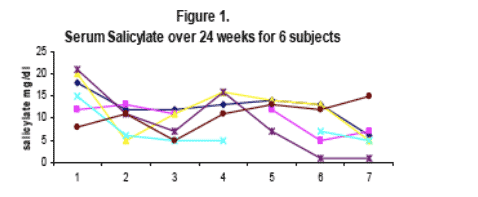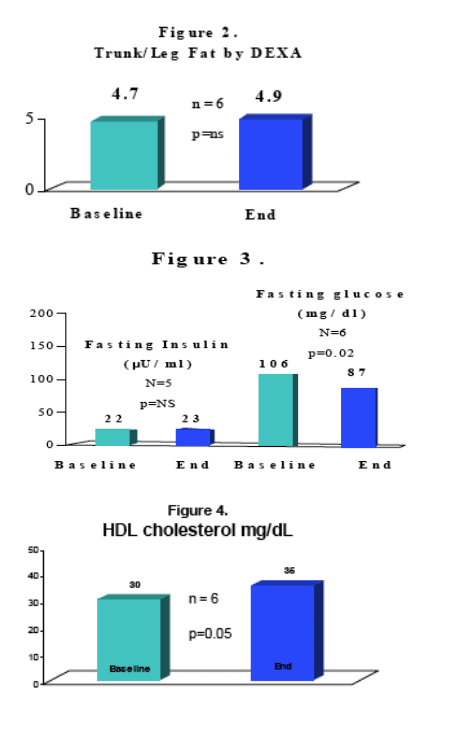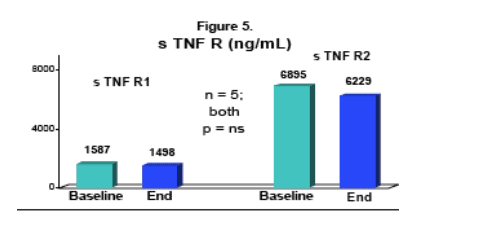 |
 |
 |
| |
Anti-inflammatory effects on body composition and metabolic alterations in HIV lipodystrophy: a pilot study
|
| |
| |
Reported by Jules Levin
8th International Workshop on
Adverse Drug Reactions and Lipodystrophy in HIV
Sept 2006, San Francisco
Gabriel Ionescu, MD, Safak Reka, M.D, Jeanine B Albu, M.D., Ellen S. Engelson, Ed.D., Donald P. Kotler, M.D.
SUNY-Downstate Medical Center, Brooklyn, St. Luke's Roosevelt Hospital Center, Columbia University, New York, NY
BACKGROUND
HIV lipodystrophy (HIVL) is associated with increased in vitro release of proinflammatory cytokines from subcutaneous adipose tissue (1) and with higher serum levels of soluble TNF receptors and IL-6 (1,2), implying a heightened systemic inflammatory state, independent from antiretroviral therapy.
The results suggest that lipodystrophy might be due, in part, to immune dysregulation with enhanced proinflammatory cytokine activity.
The following proposal is an extension of these findings, aimed at showing reversibility as a result of antiinflammatory therapy.
OBJECTIVE
To study the in vivo effects of an anti-inflammatory drug (choline magnesium salicylate - trilisate) for 6 months on:
- body fat distribution
- glucose and lipid metabolism
- circulating cytokines.
DISCUSSION
Standard doses of trilisate are reasonably safe in HIVL, though elevated hepatic transaminases are known side effects of salicylate therapy.
Six months of anti-inflammatory therapy did not affect body composition, or insulin resistance, though fasting glucose concentration decreased and serum HDL increased.
The lack of change in body composition or insulin resistance might be due to an inadequate salicylate level and subsequent lack of anti-inflammatory effect, as soluble TNF receptor levels did not change.
The observed decrease in fasting glucose concentration might be explained by decreased gluconeogenesis, a reported salicylate effect, rather than changes in insulin sensitivity.
However, these data do not support the hypothesis that HIVassociated lipodystrophy is reversible with anti-inflammatory therapy.
METHODS
- Six month, prospective, open-label pilot study
- subjects with HIVL, based on self-reported change in body shape with clinician agreement.
- Endpoints:
- The primary endpoint was change in body fat distribution.
- Secondary endpoints were changes in glucose and lipid metabolism, and in serum cytokines.
- Treatment: After baseline studies, trilisate was initiated at a dose of 1.5 g bid, adjusted monthly to maintain the serum salicylate concentration at 20 mg/dL, or 1.48 mM, for an antinflammatory effect.
- Measurements:
- Body composition was evaluated by DXA (4).
- Glucose disposal rate was determined during a low-dose euglycemic hyperinsulinemic clamp (5).
- Fasting serum lipids and soluble TNF receptors 1 and 2 (sTNFR 1, sTNFR 2) concentrations were measured.
- Safety was ensured by monthly serum salicylate levels and liver and renal chemistries.
- Data analyses
- The means of various parameters obtained at baseline and at the end of the study were compared by two-tail paired t-test.
- Correlations between changes in s TNFR 1 and 2 and serum salycilate levels were analyzed using logistic regression.
RESULTS
Twelve subjects were screened and underwent some baseline measurements. Seven subjects initiated trilisate; 4 males and 2 females completed the study.
HAART regimens contained Sustiva, Ziagen, Viread, Kaletra, Epivir, and, in only one subject, Zerit. None were taking zidovudine, or antidiabetic drugs, while all were on hypolipidemic therapy.
Average serum salicylate concentration throughout the study was 11 mg/dL. (Figure 1).
Mean values for trunk fat and limb fat also did not change.
Baseline mean DXA trunk-to-limb fat ratio was 4.7+ 1.3 (SD), and did not change significantly following therapy. (Figure 2).
Mean fasting glucose concentration decreased significantly from 106 + 21 mg/dl to 87 + 14 mg/dl (Figure 3).
Mean fasting insulin increased non-significantly from a mean of 22.1 to 23.2 _U/ml (Figure 3).
No significant changes in glucose disposal rate, or fatty acid levels were observed during the clamp studies.
Mean serum HDL concentrations rose from 30+ 14 mg/dl (SD) to 35+17 mg/dl (Figure 4)
Mean sTNFR 1 and 2 did not change with therapy. (Figure 5).
No other significant changes were noted.
There were no correlations between change in sTNFR concentrations and serum salycilate level .
One female experienced an asymptomatic, three-fold elevation in ALT and AST, with a therapeutic level of salicylate (20 mg/dl). Following a 25% dose reduction, serum salicylate level fell to 8 mg/dl and liver enzymes normalized.



REFERENCES
1. Johnson JA, Albu JB, Engelson E,S, Fried SK, Inada Y, Ionescu G, Kotler DP. Increased systemic and adipose tissue cytokines in patients with HIV-associated lipodystrophy. Am J Physiol Endocrinol Metab. 2004 Feb;286(2):E261-71
2. Mynarcik DC, McNurlan MA, Steigbigel RT, Fuhrer J, Gelato MC. Association of severe insulin resistance with both loss of limb fat and elevated serum tumor necrosis factor receptor levels in HIV lipodystrophy. J Acquir Immune Defic Syndr.2000;25:312_21.
3. Kotler D, Engelson E, Heymsfield S, et al. Anthropometric criteria define visceral fat excess in patients with HIV-associated adipose redistribution syndrome (HARS) a subset of HIV lipodystrophy. Presented at the Ninth Conference on Retroviruses and Opportunistic Infections, Seattle, WA, February 2002.
4. Belloso WH, Quiros RE, Ivalo SA, Perman MI, Galich AM, Stern LD, Barcan LA. Agreement analysis of variables involved in lipodystrophy syndrome definition in HIV-infected patients. J Acquir Immune Defic Syndr. 2003 Jan 1;32(1):104-11.
5. DeFronzo RA, Tobin JD, Andres R. Glucose clamp technique: a method for quantifying insulin secretion and resistance. Am J Physiol 1979;237:E214-23.
|
| |
|
 |
 |
|
|